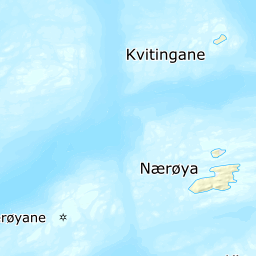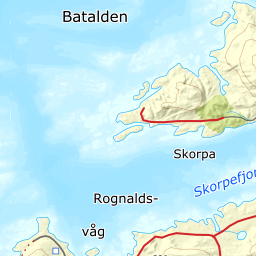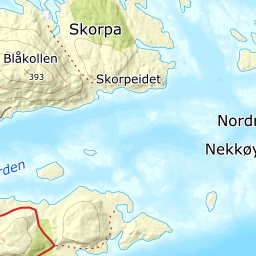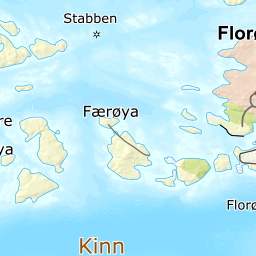Historiefellesskap med Selja
Tidlegare forskarar har meint at kyrkja kunne vere frå første del av 1000-talet, men den vanlege tidfestinga no er 1100-talet, med koret bygt eit halvt hundre år før skipet. Det er tvillaust at både kyrkja på Kinn og klosteret på Selja har ein felles, historisk bakgrunn. Legenda om Sancta Sunniva og heilagmennene som lir martyrdøden på Selja, går att i tre ulike skriftlege kjelder frå mellomalderen.
På Kinn har vi ei liknande segn. Her heiter prinsessa Borni, ho er ein del av følgjet til Sunniva, og lir same lagnad. På Selja vert reist eit kloster, på Kinn ei kyrkje, begge ein gong på 1100-talet.
Einar Seim (1885-1978), den lærde bonden på Kinn, meiner at øya kan ha vore buplass for kristne einebuarar som kom frå vest på 800-900-talet, og det kan vere grunnen til at det seinare vart bygt kyrkje på Kinn. Nokre forskarar meiner at både Kinn og Selja kan ha vore senter for kristne eremittar og misjonærar frå den keltiske kyrkja i Irland og på dei britiske øyane. Steinkrossane som står rundt om i fylket, mellom anna på Svanøy, tyder på kristen påverknad før år 1000.
Rikaste kyrkja i Sunnfjord
Ein kan undre seg over at eit så stort og staseleg hus vart reist her ytst i havgapet. Men fram til vår tid var sjøen allfarvegen, og Kinn ligg ved den ytre farleia langs kysten som også var pilgrimsveg frå kyrkje til kyrkje, på ferda til Selja og Nidaros.
Kinn har truleg gjennom uminnelege tider vore eit senter for sildefisket, og mykje folk har samlast her for å hauste av havets sølv. Dei store sildefiskeria midt på 1800-talet er vel dokumentert. Sildefiske ved Kinn er også omtala i sogelitteraturen.
Kinnakyrkja har gjennom tidene stått seg godt økonomisk, og i mellomalderen var Kinnakyrkja den rikaste i Sunnfjord. Kyrkja fekk tredelen av tienda av fisk og korn, og i gode sildeår kunne dette skape velstand i kyrkjekassa på Kinn. Kyrkja åtte mange gardar i prestegjeldet, og så langt som til Dalsfjorden og Nordfjord. På 1300-talet hadde Kinnakyrkja også stor buskap som vart bortleigd til bønder som hadde trong for fleire dyr. På 1600-talet er det meldt om at Kinnakyrkja ytte pengehjelp til kyrkjene i Innvik og på Vilnes.
Kyrkjebygget i dag
I vår tid er Kinnakyrkja ei stas- og ei sommarkyrkje. Ein historisk samlingsplass, særleg under det årlege Kinnaspelet kring jonsok. Klokketårnet står på ein dobbel steinkvelving som fører inn til gravplassen rundt kyrkja. Den eldste klokka er frå kring 1650, og den andre frå 1849. Av våpenhus har det vore fleire, alle bygde i tre. Dagens er nytt, bygt tidleg på 1980-talet. Sjølve kyrkja er i romansk stil, og vindauge og dører har rundbogeform. Kinn kommune fekk i stand avtale om kjøp i 1866, og i 1868 og 1869 vart gjort eit større vølingsarbeid.
Eldste inventaret er lektoriet. Forsking tyder på at det er bygt midt på 1200-talet, og at tre-relieffa er skorne ut av kunstnarar ved kongshoffet i Bergen i Håkon Håkonson si tid. Dei blir rekna blant dei finaste i norsk mellomalderkunst.
Alteret i koret er av kleberstein, og i steinplata er det eit lite hol, dekt med ei marmorplate som lokk. Der gøymde dei relikvier, heilage ting. Dei tre helgenfigurane i altarskåpet på sørveggen i koret er laga i Nederland, og kanskje ei gåve til kyrkja først på 1500-talet. På Kinn har figurane fått andre namn, og er knytt til lokale segner. Namna var Ingebjørg, Borni og Sunniva. Altertavla vart bygt i 1644, truleg av ein Peter Negelsen som laga altertavler og anna kyrkjekunst til mange gudshus her i landet.
Preikestolen er laga først på 1700-talet av Mads Nilsen, Bergen. Over stolen er ein rikt utskoren himling.
Ny restaurering
Kinnakyrkja vart restaurert i 1911-12, og mykje som vart gjort rangt 50 år tidlegare vart retta på då. Mellom anna vart vindauga førde attende til si gamle romanske form, innemura med kleberstein. Nye benkar vart også laga. Delar av dei gamle er festa til langveggene.
Endå ei restaurering vart gjort på slutten av 1960-talet, planlagt og leia av Riksantikvaren i samarbeid med Kinn sokneråd. Kyrkja vart m.a. kalkslegen innvendig, og fekk nytt orgel i denne perioden. Friluftsscenen på sørsida vart bygd i samband med uroppføringa av Kinnaspelet i 1985.
















